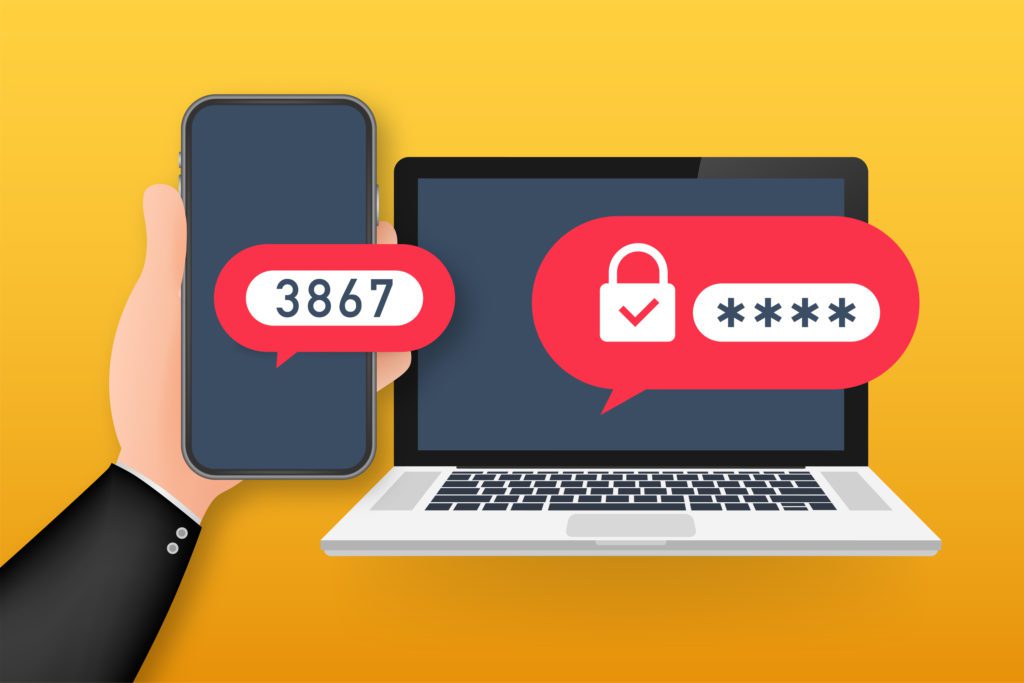
Multi-factor authentication (MFA) is one of the best ways to secure your online accounts. MFA can stop 99.9% of fraudulent sign-in attempts because the hacker generally will not have the device that receives the authentication code needed to complete the login.
But despite the effectiveness of this cloud security control, many small and mid-sized businesses don’t use it. This leaves them at a much higher risk of a data breach and cloud account hijacking than a larger company.
According to a global study of MFA use, enterprises show a much higher percentage of adoption than SMBs. MFA adoption statistics show:
- 87% of larger organizations use MFA
- 44% of mid-sized companies use MFA (500-1,000 employees)
- 27% of small businesses use MFA
Without multi-factor enabled, it’s easier for a hacker to break into a company account. Bad password practices are still widely in use because employees have to juggle so many different passwords.
These bad habits that make it easy for account takeovers to happen include:
- Using weak passwords
- Reusing passwords across multiple accounts (work and personal)
- Sharing passwords
- Storing passwords insecurely (in a “contacts” app or unsecured spreadsheet)
Why aren’t more SMBs using such powerful account protection? Because companies often get pushback from employees about adding another step to their account login process.
23% of surveyed individuals say that MFA is “very inconvenient,” and 56% of employees that use their personal device to access business apps, don’t use multi-factor authentication.
If you’re facing user resistance to implementing MFA at your Framingham area business, here are several tips you can use to reduce pushback and roll out a smooth MFA deployment.
Ways to Implement MFA to Protect Your Business Accounts (With Less Resistance!)
Manage the Business Change
Any type of workflow change that employees need to adopt is more successful if change management practices are used. Change management is the process of guiding staff through a change through communication, engagement, and resistance management measures.
You don’t have to be a large corporation to use some of these best practices. It just means doing the following to help introduce the workflow change to your team:
- Communicate the upcoming change
- Keep employees in the loop about implementation timing
- Ask employees to voice concerns so you can address them
- Explain the benefits of MFA to the organization and individual user
- Provide proper training in advance of the change
- Provide post-change user support to help staff through any road bumps
Offer a Choice of How to Authenticate
Giving users a choice between different authentication methods provides them some control over a workflow change they may not be completely on board with. You can alleviate some of the resistance by giving your staff a few options.
Each authentication method has a slightly different level of convenience and security, you can read more about each form of MFA here.
While one user may prefer one method, like getting an SMS text, another may feel a security key is better for their workflow.
Here are some options that you can provide to give employees more ownership over the MFA process:
- Authentication by fingerprint scan
- Authentication using a security key that inserts into devices
- Authentication code received by SMS
- Authentication code received through an application
Improve the Authentication Experience with Single Sign-On (SSO)
MFA can add a few more seconds to each login that an employee has to enter throughout their workday. If they log into multiple apps per day, as most employees do, that can be a drag on their productivity.
If you introduce MFA along with a single sign-on application, you solve that problem and can even decrease the time it takes employees to log in before MFA was added.
A single sign-on technology connects to multiple cloud accounts and gives employees one sign-in portal that logs them into all those attached accounts at once.
Use Additional Factors to Improve Security
You can further improve security without adding more barriers to your team by using contextual factors with MFA deployment.
Contextual factors would be things like where someone is logging in from, what time of day it is, and what type of device a person is using.
For example, you could set up an additional MFA prompt in the form of a security question if there is a login attempt from outside the country, or if login is occurring from an unrecognized IP address.
The additional prompts help you better secure your accounts from hackers, while not getting in the way of most legitimate users.
Don’t Leave Your Cloud Accounts Unprotected!
77% of cloud account breaches happen due to compromised passwords. MFA is the best way to stop this from happening. Pro Tech Guy can help your Framingham or Natick business with a smooth rollout of MFA and even add SSO to improve productivity.
Contact us today to learn more. Call 508-364-8189 or reach us online.
